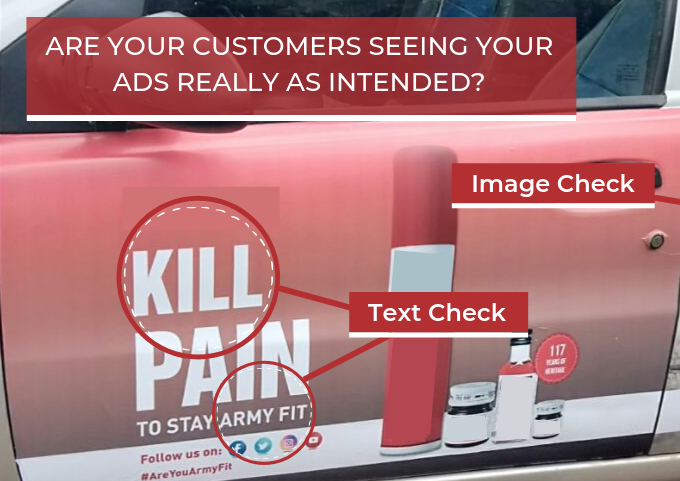As a marketer, it is tempting to appeal to the logical side of your customers. For example, “Hey look at this awesome set of safety features! This makes us the safest car manufacturer in the industry.”. Sometimes, it works too. Simple, and to the point. But as you may know, customers are not purely rational beings, they rarely make decisions using logic alone. They desire status, recognition and likability along with benefits which your brand provides. And by using a purely logical approach, your ads aren’t as powerful as they can be. We will explore how semiotics can help you create effective advertisements.
So how do you make an ad, which combines product message and appeals to the emotional, or to be more precise, the subconscious side as well? Some marketers tackle this by implementing semiotics. Semiotics is the study of signs and symbols. It has a huge scope in the academic field, and a marketer can take a leaf or two out of this interesting subject for their advertising campaign.
The mind of the Buyer
Due to information overload in this age, a typical buyer has put his subconscious mind in charge of filtering out only those information that matters to them at that particular time. For example,
” I need the latest product in the market, I will be cool to show it off to my friends.”
“Will this gift be good enough for the guest?”
The two filtering criteria in these two statements are “latest” and “good”. To stand out, you need to bypass or appeal to these subconscious filters. And stating the benefits of your product alone won’t be enough to reach out to them. This is where being aware of the symbolism of your ads helps.
To help you start on this journey. We list out a few tips which might help improve the symbolism of your ad. And help it reach out to your audience who are in need of your product. The tips are classified into text and visuals aspects of the ad
The Text for Effective Advertisement
1. Say more with few words
Text is bad. The more words your ad has, the less appealing it becomes, with a few exceptions. To complement the lack of text, use powerful images or illustrations that reflect the qualities of your brand and product. The intended qualities can be in the form of visual elements, such as smiling faces to indicate happy customers or fresh and clean produce near your food product to reflect “freshness”.
2. The ad should talk to your customer
Most of the failed ads fall into two categories: straight-up poor quality ads and great ads which don’t cater to any audience. To target your audience, design an ad which caters to a single person, even if it is going to be shown to millions of people. The conversation should be in a simple tone and in a friendly manner. Most brands tend to use an authoritative tone, which decreases the effectiveness of the ad. Because as an individual, the ad would appear as cold and distant to your customer.
The visuals for Effective Advertisement
3. Have a focal point
Ads without a dominating feature or focal point would fail to gain the attention of the viewer in most cases. Interface designers understand the importance of visual hierarchy because they are the primary indicators of the user’s journey in their interfaces, leading them to the intended destinations. But for advertisers, the viewer’s journey isn’t given much importance due to their deemed irrelevancy for effective advertisement.
The focal point of the ad can be the image or the main text. The focal point usually takes the most space in the ad, hence that be dominating enough to gain the attention of your semi focused viewer.
4. Effective Advertisements make judicious use of patterns
Humans have evolved to recognise patterns. Your audience is looking for them everywhere. In essence, putting a recognisable pattern increases the odds of your ads being viewed significantly. A great way to create a pattern is to group similar or related objects and make effective use of whitespace.
5. Colour as a signifier
Colours have different meanings in different regions. In some places, white signifies purity while in others, it is associated with death. In most places, green means progress and red symbolise decline. To make a symbolic ad, understand what each colour means in the target geographic region to improve the significance of your ad.
Why does it matter?
Symbolic Ads builds trust. Ad design has a significant say in your customers’ perception of your brand. In a study, more than 80% of the participants cited design-related issues such as colour, text and feel are the primary influencers of the reduced trust in their initial exposure to an advertisement. Symbolic design is the key to making the first impression. For people to trust your brand, make a symbolic and neat design that makes an instantaneous connection with the audience searching for the service or the product they are looking for.
Conclusion
As discussed earlier, people pay attention only to those ads which are relevant to them at the time of their need. To create an effective ad, identify your primary audience and the qualities in the desired product they are looking for. Design your ads with the visual elements that represent those qualities and optimise for it. You will have a winner in your hand. Find a helpful infographic for semiotics analysis at the end of the page. Hope our mini-guide will help you create effective advertisements in future.
BrandOnWheelz is India’s leading car advertising company. If you would have ads on cars throughout India, contact us at 9066774457 or send an email to knowmore@playonwheelz.com




